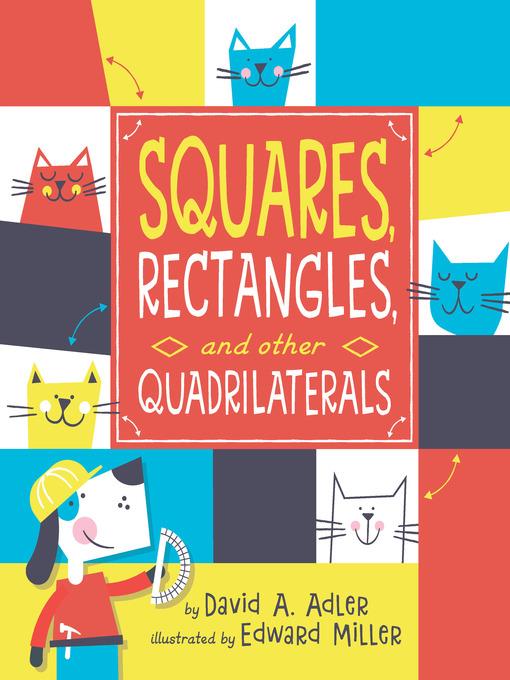
Squares, Rectangles, and Other Quadrilaterals
فرمت کتاب
ebook
تاریخ انتشار
2018
Lexile Score
590
Reading Level
2-3
نویسنده
Edward Millerناشر
Holiday Houseشابک
9780823441389
کتاب های مرتبط
- اطلاعات
- نقد و بررسی
- دیدگاه کاربران
نقد و بررسی

September 1, 2018
Adler and Miller previously tackled Circles (2016) and Triangles (2014); now they add quadrilaterals.The duo start off slowly (though not as basically as in the previous two books) and build the learning as the pages turn. Polygons with four straight sides are quadrilaterals. If their sides are of equal length and their angles all measure 90 degrees, they are squares. Using a ruler and a "right-angle tester" (a corner cut off an envelope), readers can test shapes. An analog clock is used to introduce angles and their measures, and as in Triangles, Adler encourages readers to snip the corners off quadrilaterals they have drawn and put their vertices together, proving that the angles always sum 360 degrees. The rest of the book defines other types of quadrilaterals: three types of trapezoids, a rectangle, a rhombus, a kite, and a parallelogram. The use of an empty cereal box to help children visualize shapes is rather confusing, and the digital illustrations are a little busier here than in the previous titles, the measures and marked angles sometimes visually overwhelming. Unlike Circles, the learning is not nearly as deep: This is more a glorified shape book that looks only at shapes with four sides and defines vocabulary, so the audience and format are a mismatch.This has its place in the series but is not as strong as the previous two. (glossary) (Informational picture book. 6-10)
COPYRIGHT(2018) Kirkus Reviews, ALL RIGHTS RESERVED.

October 1, 2018
Gr 3-5-Adler and Miller have created another math-themed picture book to help young minds further understand polygons. What could be seen as an intimidating subject for students, young and old, becomes less so through the use of an inviting format and cute cartoon animals. Miller's bright, digitally drawn shapes appear alongside colorful cats and dogs. Each quadrilateral is described in great detail, identifying the number of sides, types of angles, and the degrees. Throughout the text, key words are highlighted by their varying size and color for readers to notice. The book provides ample opportunities for readers to make their own shapes with activities included within the narrative (using an empty cereal box to make a parallelogram, for example). The work concludes with a brief identification quiz and a short glossary. Although the topic may be difficult for little readers, Adler offers kids insight to the complexity of polygons. VERDICT An unintimidating look at math and shapes, and a fine addition to nonfiction collections.-Hilary Tufo, Columbus Metropolitan Library-Reynoldsburg
Copyright 2018 School Library Journal, LLC Used with permission.

December 1, 2018
Grades 1-3 Prolific mathematics educator Adler (Money Math: Addition and Subtraction, 2017) here clarifies geometric vocabulary pertaining to quadrilaterals, including squares, rectangles, trapezoids, rhombi, parallelograms, and kites. He emphasizes the rules that determine the correct name for each shape (for example, squares are closed, four-sided polygons with equal sides and equal right angles) and offers hands-on activities to assist children in proving these details for themselves. He also explains how the sum of the angles in any quadrilateral is always 360 degrees and provides directions for measuring and demonstrating that the summed angles create a circle. Miller, Adler's frequent collaborator, employs flat, boxy shapes and a primary color palette in his illustrations, appropriate to this volume's content. A friendly looking dog carpenter uses various tools (including a carpenter's square and a protractor) to further clarify Adler's descriptions, and several perky cats assist in the demonstrations. The animals add a humorous touch that livens up what might otherwise be a rather dry vocabulary discussion. Diagrams are clear and well labeled, making this a worthwhile addition to the mathematics shelf.(Reprinted with permission of Booklist, copyright 2018, American Library Association.)

























دیدگاه کاربران